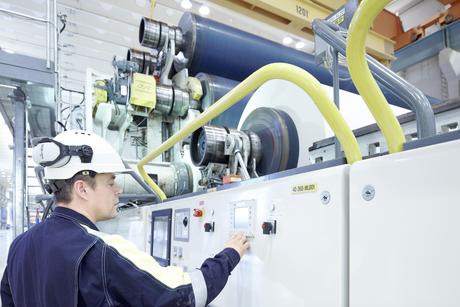Energy efficiency without the upfront costs

A number of businesses are burdened with the rising cost of energy bills, with significant impacts to their bottom line.
This tremendous cost of power at a site is represented by the power used (active) and excess unused power (reactive). The combination of active (kW) and reactive power (kVAR) determines the actual power drawn from the network (apparent power kVA). The level of wasted reactive power causes poor power factor and attributes to rising energy costs.
A review of site energy bills will identify if power factor issues exist at your site. There are several benefits for a site when a high level of reactive power is eliminated through the integration of power factor correction equipment, some of which include lowering costs to achieve the same tasks, as well as gaining energy efficiency from your equipment and extending service life. You can also expect to gain additional capacity with increased system load capabilities from existing equipment such as transformers, switchgear and supply cables and the peace of mind knowing you are running your workplace as efficiently as possible.
Power factor correction system costs can vary depending on the size and complexity of the system. Typically, payback timelines can be within 1–3 years.
In addition to poor power factor, many businesses may be unknowingly subjected to non-optimal network tariff and in some cases demand charges (depending on the tariff the distributor chooses to apply to the account for that NMI). The current energy agreement may not necessarily be the optimal tariff for that site’s account if the usage profile for that site is not as per the local network service provider’s (LNSP) initial information when the site is connected. On initial connection of a site, the network tariff is typically based on the site’s usage at full capacity. The maximum capacity usage profile does not always come to fruition and in some cases the intended use for a site is not always as specified in the electrical connection application.
If your business has recently relocated, a network tariff review should be undertaken to ensure that you do not take on a non-optimal network tariff based on the usage profile of the previous user. On the other hand, for existing sites either a data spike or an unusual usage spike can cause the site demand to be set at a far higher level than what is consistently used. In instances where the LNSP does not apply a rolling peak demand type tariff structure, this too can result in excessively higher network charges through the demand charges applied for the energy account.
The impact of having a non-optimal network tariff or excessive demand charges on an electricity account can be costly. Network charges can be as much as 40% of the overall cost on an electricity bill. Having charges applied that are excessive due to them being non-optimal can lead to network tariff charges costing your business far more on an annual basis than you would otherwise have to pay. This can unnecessarily remain as an ongoing issue if it remains undiagnosed and not remedied.
A network tariff review will expose any potential unnecessary overspend. A solution can be applied to reduce costs on your account. The benefits from having a network tariff review are two-fold. Your business will have peace of mind that it is not paying more than it should. In other cases, where action is required either due to a non-optimal tariff or where the business contract demand does not match the demand profile, your costs will become rationalised if a tariff change or demand reset is successful.
Power factor specialist companies such as Control Logic can simplify the process of site energy consumption analysis through their complimentary power factor, network tariff and demand review service. If funding is a concern, then there are options to tailor a solution that requires no capital outlay. A complete turnkey solution is offered by Control Logic, which is structured to generate immediate savings, including warranties, service and maintenance. The solution is insured for errors or omissions.
A managed service agreement is suitable for energy-efficiency initiatives to deliver a turnkey service-based package and includes network tariff and energy bills review, site audit, system recommendation, financing, system design, commissioning, scheduled service and maintenance alongside ongoing support.
This means you’ll be able to maximise the appropriate rebates and grants at the state and federal level, which can be then applied to the solution to benefit your business. This process is simplified through Control Logic’s services by completing the relevant documentation for you.
A turnkey solution can assist your business to preserve capital and traditional funding for other important service delivery requirements, reduce risk and ongoing maintenance costs, and improve site operation costs.
From coal to clean: accelerating Asia's renewable energy transition
As Asia faces mounting climate challenges and rising energy demands, the push to shift from coal...
Mitigating cybersecurity risks in tomorrow's smart cities
As cities embrace the potential of 'smart' technology, the allure of a more sustainable...
Navigating the supply chain for Scope 3 emissions
As data centres transition to renewable energy sources, they now need to gain a better...









